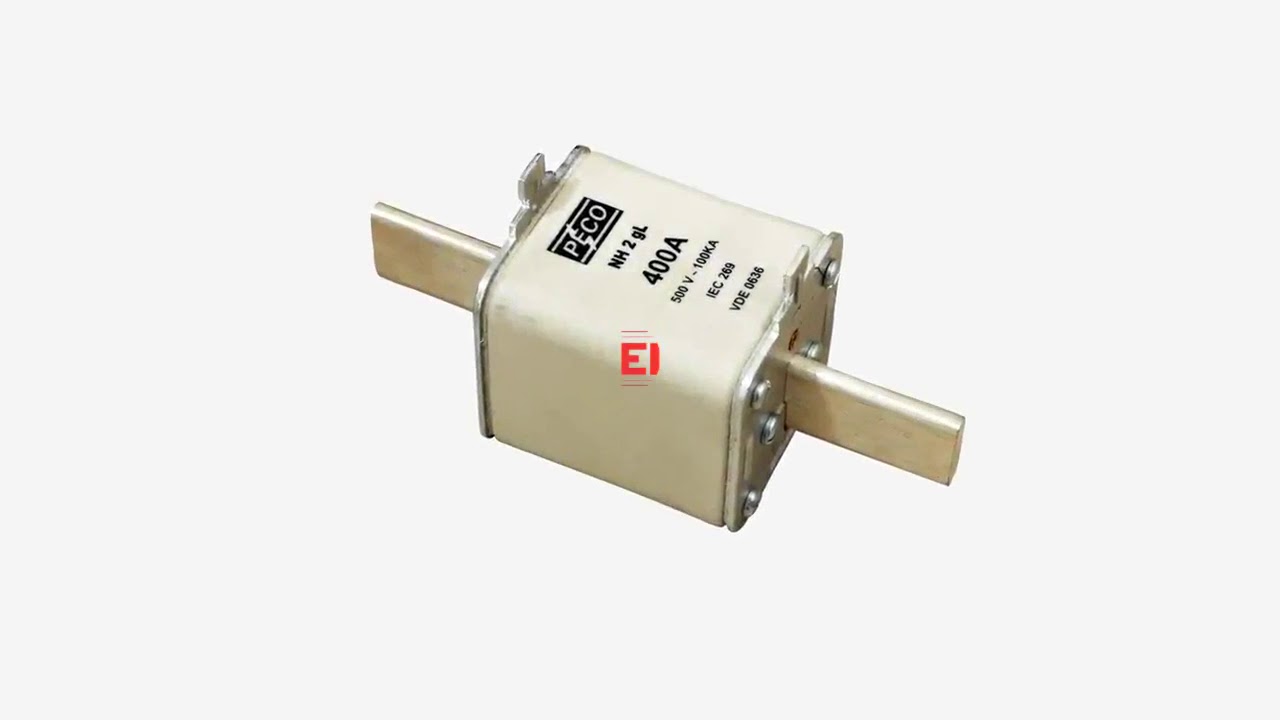
HRC fuse stands for “High rupturing capacity”, are intended to safeguard electrical circuits having either a dc or ac switch in particular situations. They have fully sealed fuses with high breakdown capabilities created via an extensive study by researchers or manufacturers.
Features of an HRC Fuse
- This fuse is distinguished by its potential to prevent an over-current in a circuit. When the current exceeds the specified value, the fuse quickly burns and breaks the connection, even if the over-current significantly exceeds the circuit’s rated value.
- This fuse has a wire that safely conducts the short-circuit electricity for a set amount of time. If the fault is solved during this time, it does not blow off; otherwise, it melts and disconnects the circuit from the supply; hence, the system stays safe.
- HRC fuses comprise glass or chemical compounds. By closing the cage firmly, air cannot enter the fuse. The ceramic shell formed with a metal cover fused with combustible wire on both sides of the fuse. Based on various conditions, other chemical compounds are employed in HRC fuse production and building.
- The materials and design of the fuse define the opening speed and rated current handling capabilities.
- The ideal qualities of this fuse are less expensive, has a low melting point with high conductivity, and are free from oxidation-related damage.
Types of HRC Fuses
1) Fuse type – NH
- These fuses are not heavy but smaller in size and have a solid dimension.
- Protects against overload current and short circuits.
Usage: protects motor starters and other equipment against overload and short circuits.
2) Fuse Type- DIN
- Available in a wide range of rated currents
- Having the ability to operate at varied temperatures and excellent cleaning capability.
Usage: In the transformers, gas-insulated switchgear, air and mining industries, etc.
3) Fuse type – Spade or Blade
- These are less in weight and have a lower cutoff current.
- Having a plastic body and two metal covers to fit within the socket.
- Available in varied sizes, forms, and different current ratings.
Usage- in automobiles to protect from short-circuits and in motors to provide backup protection.
Advantages of HRC Fuse
- Operation is quick.
- High breaking strength.
- The expense of maintenance is almost nothing.
- Simple and straightforward to set up.
- Remove all fault currents, both high and low.
- They do not degrade over time.
- They consistently deliver good results.
- The best protection for overload, open circuits, and reverse current.
- They give dependable service.
- They are of low price as compared to others.
- Safeguard the system against faulty wiring for shifting devices.
Conclusion
The current that circulates in an electrical circuit is limited. Fuse is the weakest link in an electrical circuit having a dc or ac switch as it protects the entire system from severe damage caused by over-current or short circuit problems. HRC fuse by INDOASIAN offers high-speed working along with short-circuit and over-current protection. They also ensure industrial power distribution stability, chip protection, and backup safety to a circuit breaker.









Comments